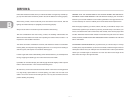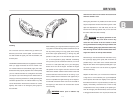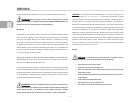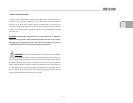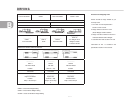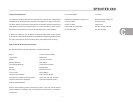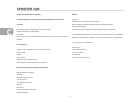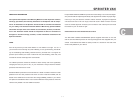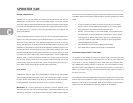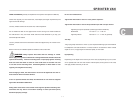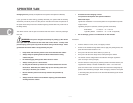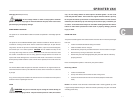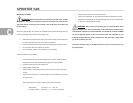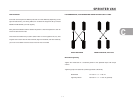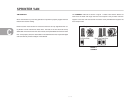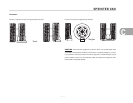
C
SPRINTER VAN
C - 4
PROPER TIRE INFLATION
The level of air in your tires affects your vehicle’s overall performance. Not even the
highest quality tire will perform well if it’s not inflated properly. The correct pressure
varies from vehicle to vehicle and depends in part upon driver preference. Each vehicle
has a recommended inflation pressure, usually found on a placard on the door section,
door post, glove door, or fuel door. On the Interstate Motorhome, it is located on the
Driver’s seat pedestal.
Correct tire inflation is a key component in tire care. The recommended inflation pres-
sures for your tires are indicated on the certification label or in your owner’s manual.
Since RVs can be loaded with many different configurations, the load on each tire
will vary. For this reason, air pressure should be checked based on the load on each
individual tire. Cold Inflation Pressure should be adjusted to handle the maximum tire
load, and all tires on the axle should carry the same inflation pressure. COLD TIRE
INFLATION PRESSURE is the tire pressure checked in the morning before you drive
more than a few miles or before rising ambient temperatures or the sun’s radiant heat
affects it. Check your tires’ air pressures at least once a month, before each trip and
each morning you drive during a trip. Tire pressure should be checked cold, as tire
pressure ratings have been designed with typical running heat/pressure build-up in
mind. Make sure the valves and caps are free of dirt and moisture.
Under Inflation
Under inflation brings a higher risk of susceptibility to damage due to road hazards,
reduces casing durability, and causes a loss in fuel economy, plus uneven or irregular
tire wear. Severe under inflation brings about an increased risk of tread separation,
handling difficulties, and possibly tire failure, which is caused by overheating.
IMPORTANT: It’s a common practice for RV owners to lower tire pressure in their
search for a smoother ride. This is not only dangerous, it’s relatively ineffective, and the
difference in ride quality is not significant. When minimum inflation pressure require-
ments are not met, tire durability and optimum operating conditions are compromised.
Tire inflation pressure should always meet at least the minimum guidelines for vehicle
weight.
• It may be necessary to inflate your tires at a truck stop or truck service
center in order to achieve adequate air pressure for your coach's needs
• Only permanent air seal metal valve caps should be used.
• Be safe - if a tire has been run 20% under inflated, it must be dismounted
and inspected by a trained professional. It should not be aired up without
a full inspection or without using a safety cage. Use a calibrated gauge.
If your tire is rated for higher inflation pressures, a special gauge will be
required designed for larger tires.
• Don't bleed air from warm tires to reduce pressure buildup
• Don't inflate tires to cold PSI rating beyond rim specifications
HOW OVERLOADING AFFECTS YOUR TIRES
Tire pressure is what enables your RV tire to support loads. Overloading your tires
can have serious consequences for passengers and your RV. Too much weight can
cause stress on your RV’s suspension system, brake failure, shock absorber dam-
age, handling and steering problems, irregular tire wear and possible tire failure.
Excessive loads or under inflation can lead to an excessive amount of heat and tire
failure. If you discover that your tires cannot handle the load, lighten the weight of
the load on your tires.
Tire pressure should never be reduced below the vehicle manufacturer’s recommended
levels to support load conditions in order to improve the ride quality of a vehicle. The
difference in ride quality is not significant. When minimum inflation pressure require-
ments are not met, tire durability and optimum operation can be affected.



